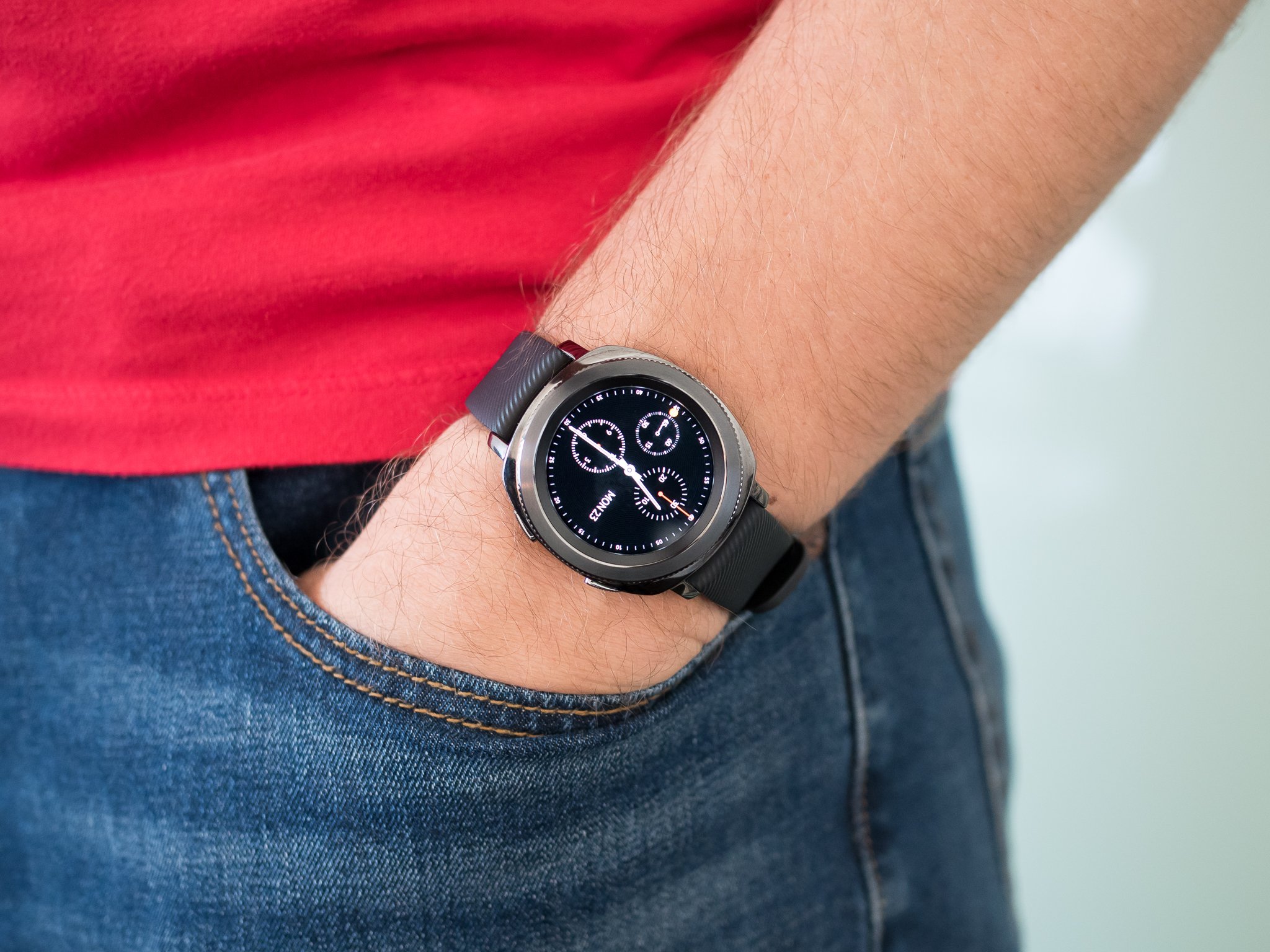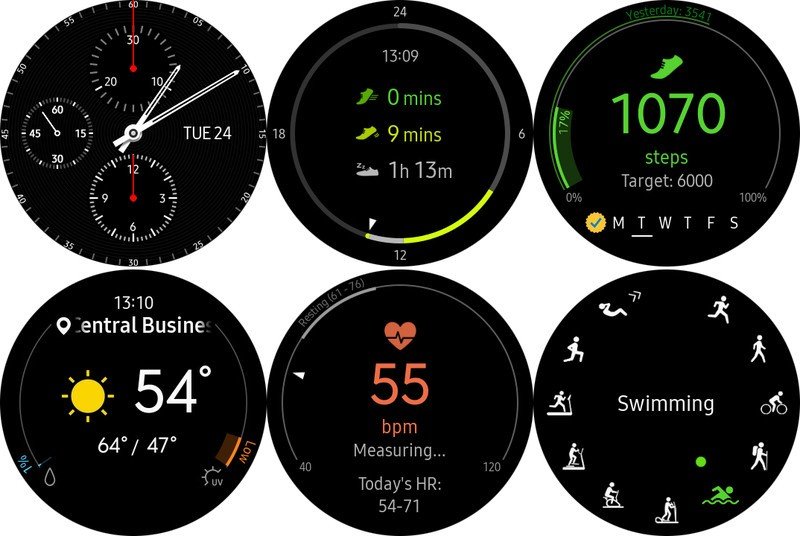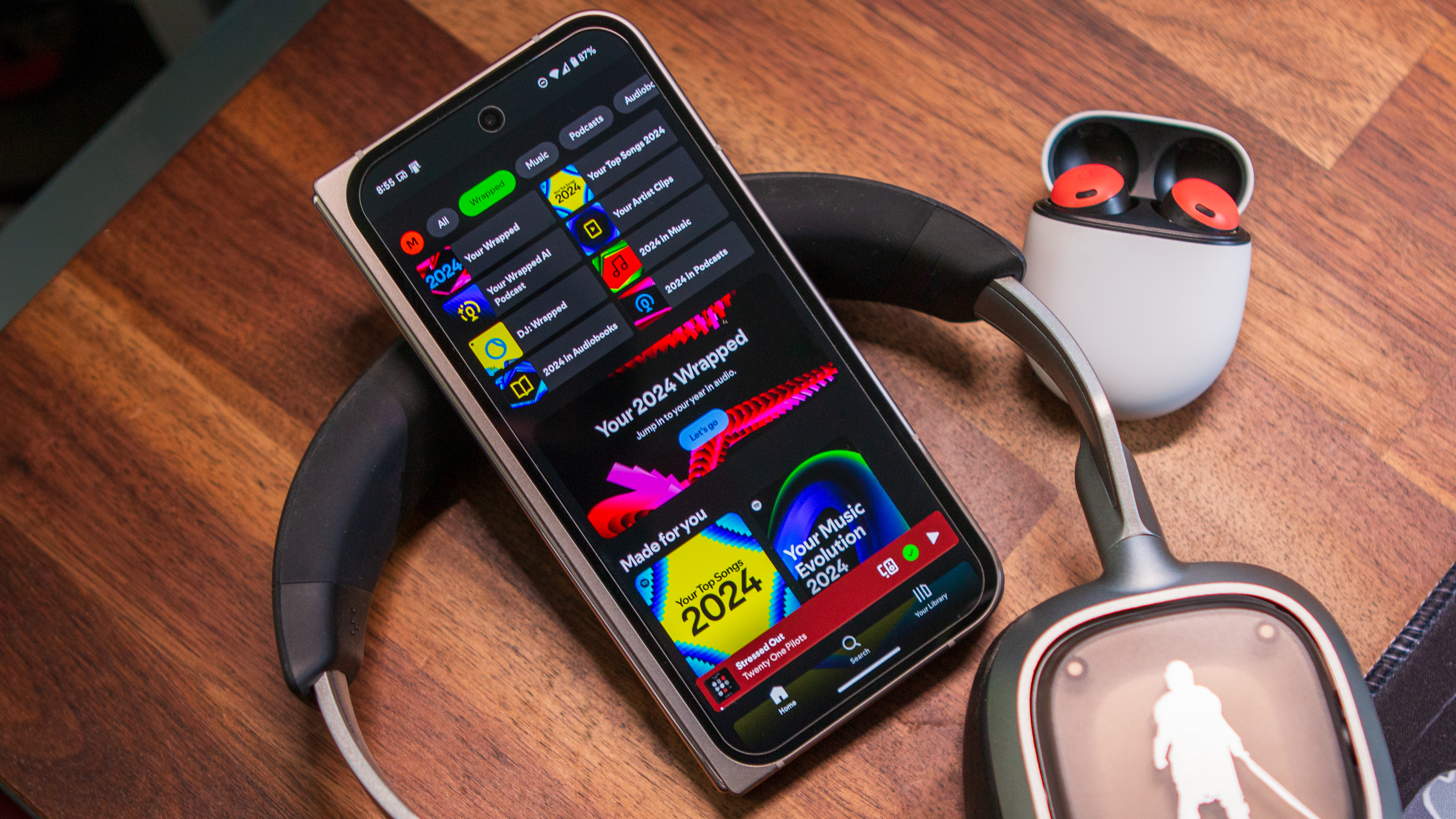The quick take
The new Gear Sport is not only a great successor to 2015's Gear S2, but also Samsung's best ever all-around smartwatch. It manages to be notably smaller and lighter than the Gear S3, while keeping nearly all of its capabilities. Samsung's wearables still attempt to do too much with overbearing software on a tiny screen. But that's worthwhile in order to get the great fitness tracking, which doesn't tie you into a specific ecosystem, and an overall great interface.
The Good
- Awesome display and two-day battery
- Great fitness tracking
- Interoperability with multiple tracking ecosystems
- Rotating bezel is a treat
- Notably thinner and lighter than Gear S3
The Bad
- Software attempts to do too much
- No neutral or women's design option
- Setup process can be clunky on non-Samsung phones
- No LTE or MST Samsung Pay payments
The internals
Samsung Gear Sport Tech Specs
| Category | Spec |
|---|---|
| Display | 1.2-inch Circular Super AMOLED 360x360 (302 ppi) Corning Gorilla Glass 3 |
| Processor | Dual Core 1.0 GHz |
| Operating system | Tizen Wearable OS |
| RAM | 768MB |
| Storage | 4GB |
| Connectivity | Bluetooth 4.2, 802.11n Wi-Fi, NFC, GPS/GLONASS/Beidou Accelerometer, Gyro, Barometer, heart rate monitor, Ambient light sensor |
| Battery | 300mAh |
| Charger | Wireless charging |
| Durability | 5 ATM water resistance, MIL-STD-810G |
| Dimensions | 42.9 x 44.6 x 11.6 mm 50 g (without strap) |
| Color | Black, Blue |
| Compatibility | Samsung Galaxy: Android 4.3+ Other Android: Android 4.4+ iPhone 7, 7 Plus, 6S, 6S Plus, SE, 5: iOS 9.0+ |
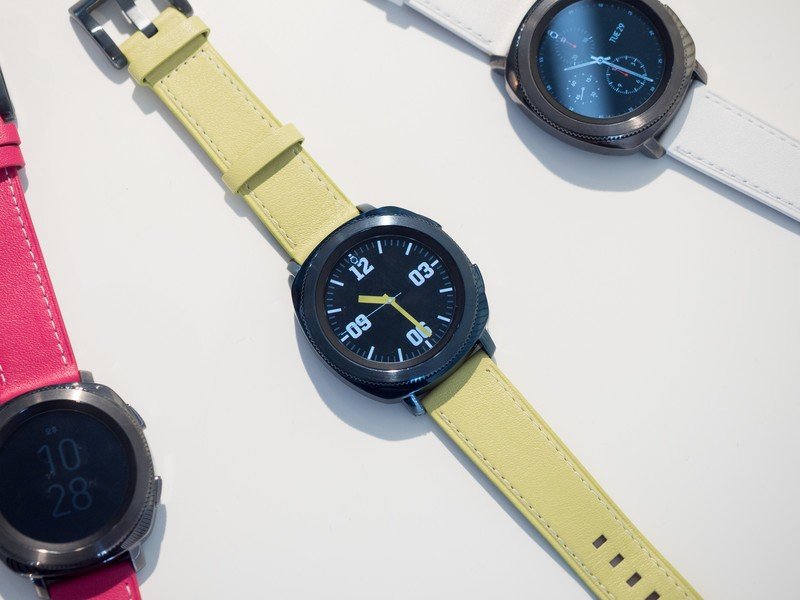
Hitting the sweet spot
Samsung Gear Sport Things you'll love
As the Android Wear market continues to struggle, Samsung is keeping on a steady pace of releasing wearables running its own Tizen OS. Focusing more and more on fitness, realizing that that's really the only place smartwatches are growing today, Samsung has the new Gear Sport. It's ostensibly a smartwatch, one that draws upon the Gear S3's design, but with all of the same robustness and fitness tracking capabilities of the Gear Fit 2 Pro. For a lot of people, that's exactly what they want — the best of both worlds, in effect.
Samsung has really refined its wearable hardware, and the Gear Sport is a great piece of tech.
Samsung has its smartwatch hardware quality down, and the Gear Sport is a great example of the heights the company has reached after years of trying different approaches. The Gear Sport's body is a sleek and handsome two-tone metal that feels rock solid, and the buttons and rotating bezel are top-notch to match. The back, which has to be plastic for radio penetration, feels just fine — but is the one place that reminds you you're wearing a smartwatch and not a good ol' mechanical watch.
Get the latest news from Android Central, your trusted companion in the world of Android

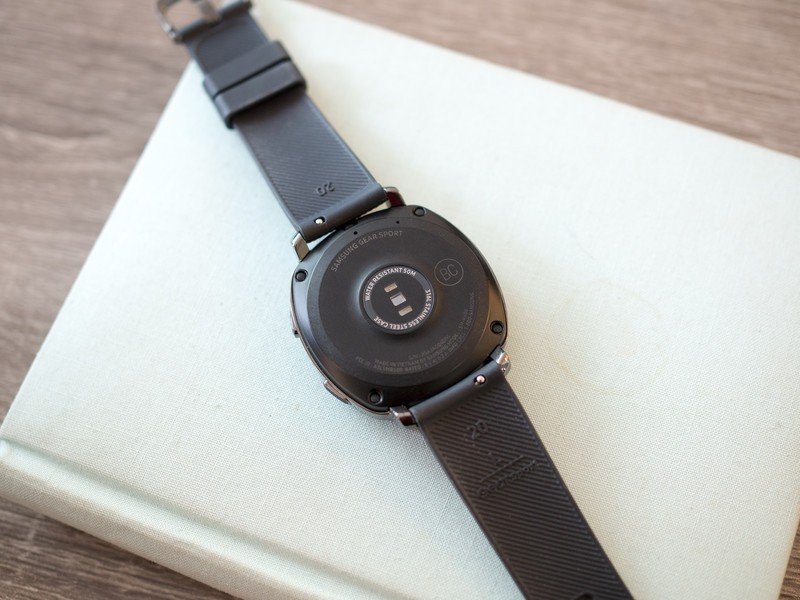

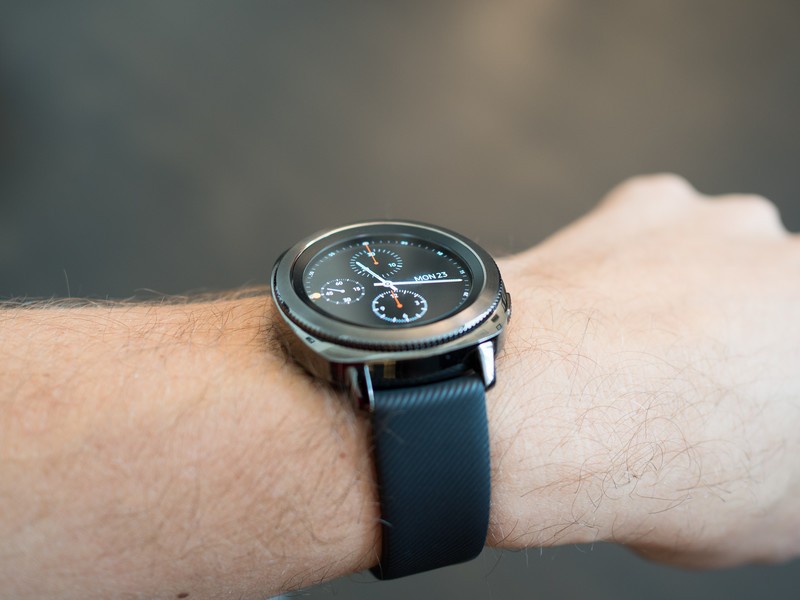
With a case size footprint of 43 x 44 mm and a 11.6 mm thickness the Gear Sport isn't super small, but next to the Gear S3 it feels like a breath of fresh air. The Gear Sport feels totally natural on my wrist, like a mechanical watch size I'd actually wear every day, and unlike the Gear S3 doesn't ever feel like a burden or a compromise of size for technology. You don't accidentally bang it on anything throughout the day, and you can easily slip a jacket sleeve over it.
Style is always subjective, especially when we talk about watches or other jewelry, but I'm quite a fan of the Gear Sport. It's stylish, if a bit masculine, and does a good job of communicating that it's both a watch that's tuned for daily wear but also hardened to take the punishment of running or hitting the gym. The standard watch band attachments give you options to swap to an insane number of bands — from Samsung or any third party — as well, letting your personalize or change it throughout the week for a different look.
The core interface is great, and everything speeds along for two days on a charge.
Beyond the looks, let's talk about the business end of this thing: actually using the watch. Samsung's core smartwatch interface is great, and does a fantastic job of maximizing the use of the circular screen with interface elements that go all the way to the edges and play off of its rotating bezel as a primary input method. The "set of home screens" idea makes perfect sense, and can be as complex or simplistic as you want. You can fill up a set of five or 10 home screens just with the offerings pre-loaded on the watch, and have something that fits your needs — whether that's fitness, or something more specific.
The 1.2-inch fully circular display is a typically great Samsung AMOLED panel, being both colorful and plenty bright enough to see outside or at awkward angles. The way Samsung's watch faces drop into a low-power "always on" state is graceful, and really shows off the great black levels of the screen. That mode's turned off by default (like much of the Gear Sport's capabilities) in order to save battery, but even with everything turned on I still managed two full days without worry. If you want to turn everything off and be more judicious, you can get three full days out of it.
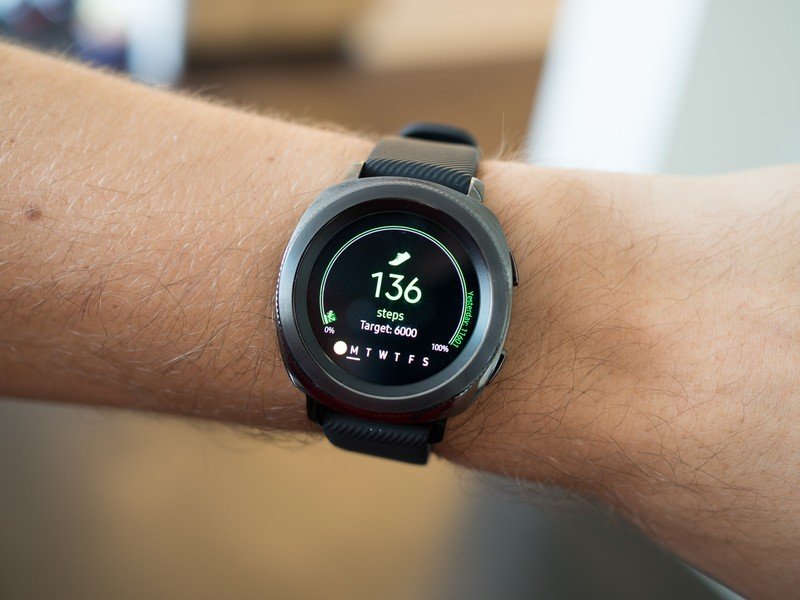
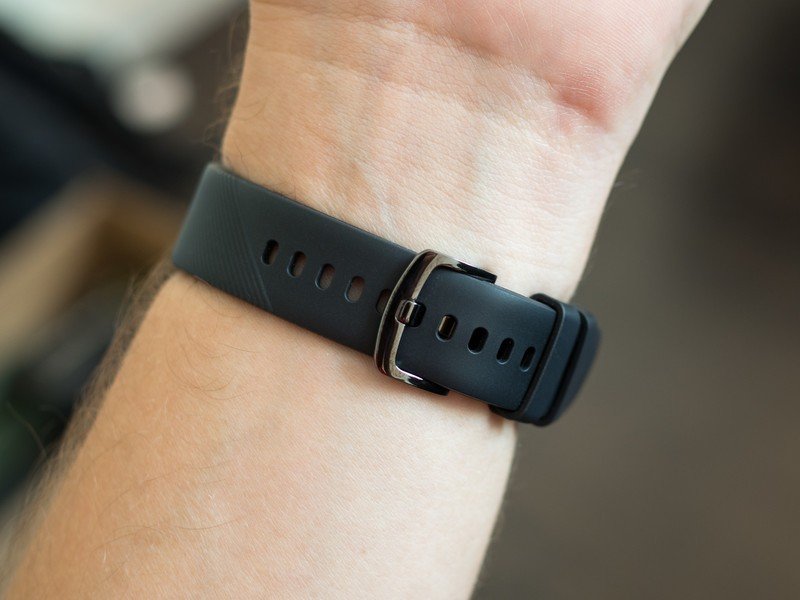
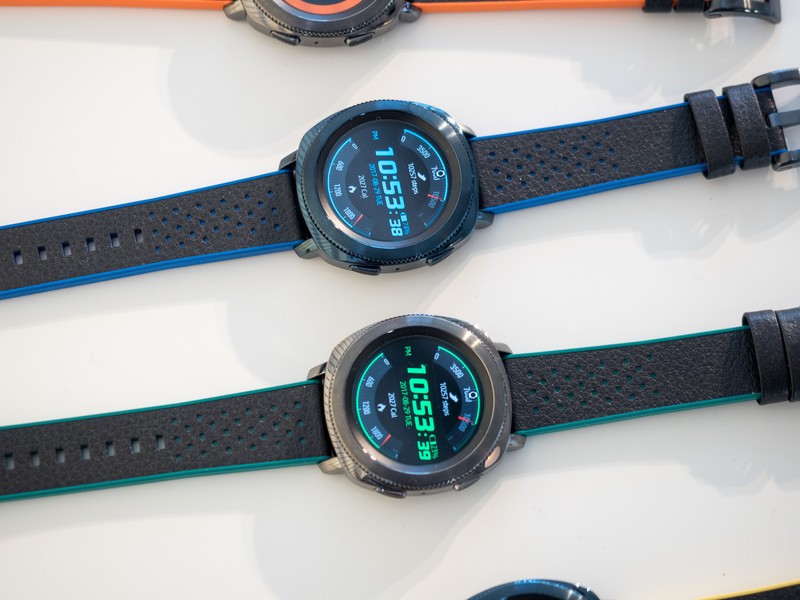
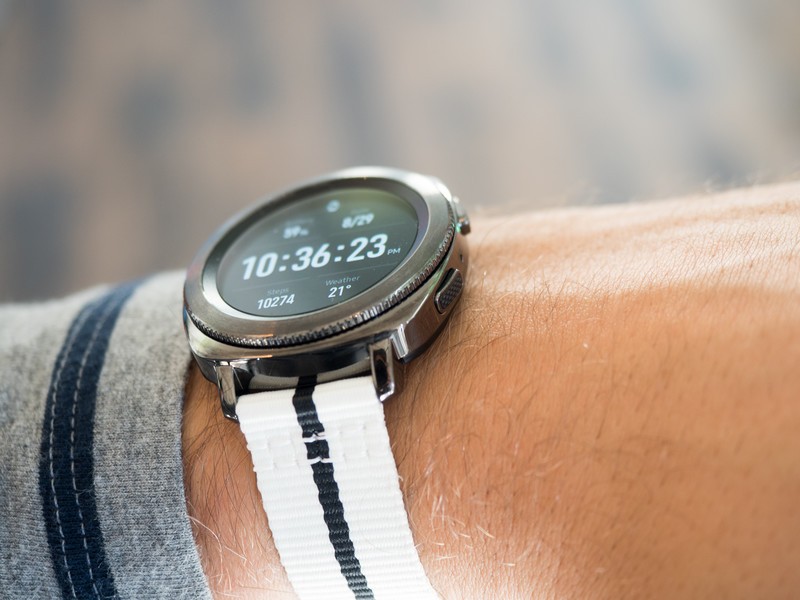
With 'Sport' in the name you expect great fitness tracking, and you get it.
With "Sport" in the name, the Gear Sport is of course great at tracking all of your activity. It easily handles the "daily" metrics like sleep, steps, floors climbed, heart rate and general movement levels, combining it all into a "last 24 hours" interface that's super easy to understand at a glance. Then you get to the next level of true activity tracking, with GPS-located running, walking, hiking and cycling, but also swimming, machine-based workouts and step-by-step coaching for free weight work ... provided you're okay taking prompts from a small screen on your wrist. Tracking all of this activity has been precise for me, just like Samsung's previous wearables, and its automatic workout detection means I never miss recording any activity throughout the day.
Just as importantly as recording all of this data is how Samsung has really opened up its doors to let you put that data into the fitness ecosystem of your choice. You can of course use Samsung's own Health platform, which is there by default, but you can also install the Under Armour suite of apps consisting of UA Record, Map My Run, MyFitnessPal and Endomondo. That set of apps doesn't cover every possible platform out there, but there's a much better chance that you're using one of those than Samsung Health if the Gear Sport is your first Samsung wearable.

Too much software
Samsung Gear Sport Things you'll hate
Though the general experience of using the Gear Sport is great, there are two key areas where it still comes up short — one in the hardware, and another in the software.
Samsung's Tizen-based wearable OS is really good at all of the basics, and as you read above I'm a big fan of how well it integrates with the circular hardware to give you a robust set of features and interface paradigms. The problem is that Samsung continues to try and do way too much on its wearables, and that's extremely unfortunate. Despite the Gear Sport being more focused on fitness than the Gear S3, it still has all of the crazy capabilities of that larger power user-focused watch.
Samsung still tries to do far too much with its wearable software — it needs to scale back.
There are just as many pages of settings on this watch as there are on a Galaxy S8. And just as many parameters to tweak. Samsung still insists on cramming two full pages of apps into an app launcher on the watch, and including gems like a month calendar widget, a news reader, a picture gallery (???) and a PowerPoint controller, among plenty of others. The Galaxy Apps store is basically an empty field littered with dead or dying watch faces and bad utilities. This is a perfect example of trying to be all things to all people, rather than focusing on the great core interface it has designed. If Samsung decided to make the Gear Sport do less, it'd actually be a better overall product.
On the hardware side of things, it all comes down to addressable market. For as sleek and stylish as the Gear Sport is, it definitely isn't designed to appeal to women — both in its overall size and case styling. Yes it's much smaller than the Gear S3, but the Gear Sport is still going to stand out or feel a bit clunky on a smaller wrist, there's just no getting around that. And with the choice of a gunmetal black or deep blue, with sporty rubber bands to match, it doesn't have any sort of aspirations of being matched up with women's fashion. Samsung's own Gear Fit 2 (or even the Gear S2, to a lesser extent) feels a whole lot more agnostic in this regard.
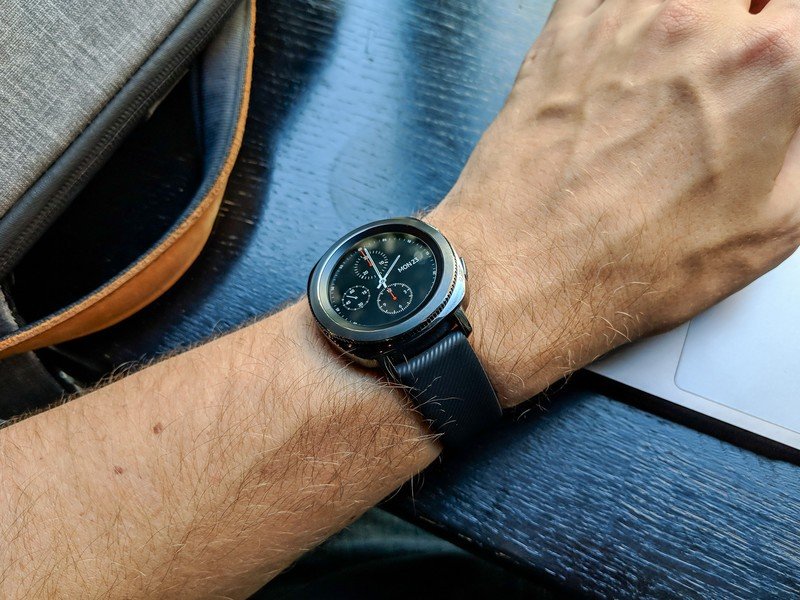
The best of a small group
Samsung Gear Sport Should you buy it?
The smartwatch market isn't that large, and the number of compelling offerings can really be counted on a single hand. The best chance smartwatches have right now is to go after the fitness tracking market, appealing to those who want something that can handle all of their workouts but also look fine over the course of the day as a watch rather than a clunky rubber and plastic band on your wrist.
It's hard to argue for a sport-style Android Wear watch when the Gear Sport exists.
The Gear Sport does a darn good job of approaching things from this angle, and it does it far better than the big, bulky and cumbersome Gear S3. Even though the Gear Sport misses a few niche features like LTE and full MST Samsung Pay support, it does everything else its larger sibling does — and goes a step further with swim tracking and better waterproofing. And because it's smaller and easier to manage, you'll end up wearing the Gear Sport far more — it's comfortable to wear on a daily basis, and with a band swap it can be dressed up or down as your style changes.
Samsung's software is still overbearing and bloated in many respects, but if you don't go into it looking for the Gear Sport to be a replacement for your phone you'll be extremely happy with the core interface, widgets and experiences. Everything is super quick and displayed on a great screen, and even with all of its features turned on the Gear Sport can last you two full days on a charge.
The smartwatch market may be small, but there are still people out there looking for a more advanced piece of technology to put on their wrist. At $299, the Gear Sport is a great one to consider — both as a watch, and as a fitness tracker.
4 out of 5

Andrew was an Executive Editor, U.S. at Android Central between 2012 and 2020.
